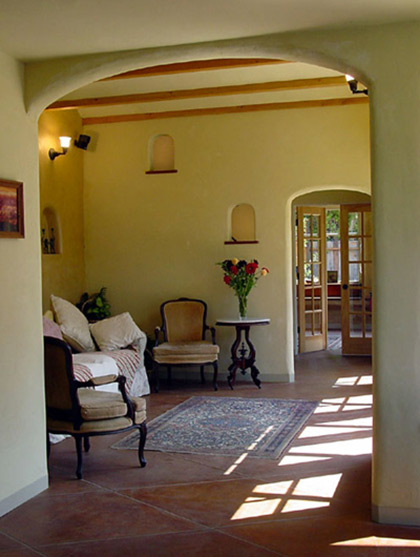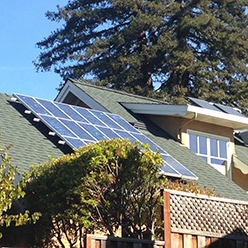How to Find and Fund Solar
Capitola Green Energy Incentive Program
Goal: Capitola City Council initiated the program to promote sustainable energy practices and encourage more residents and businesses to install rooftop solar photovoltaic systems, solar water heaters, and electric vehicle charging stations.
FREE permitting on:
• Rooftop solar systems
• Solar water heaters
• Electric vehicle charging stations
Expedited process: over-the-counter plan check reviews by appointment to expedite the permit process.
Call the Building Department at (831)-475-7300 to schedule an appointment.
 It's never been easier to employ solar energy. The Capitola City Council recently adopted the Green Energy Incentive Program which provides for expedited and FREE permit processing for private rooftop solar systems, solar water heaters, and electric vehicle charging stations. See the Green Energy Incentive Program brochure for additional information.
It's never been easier to employ solar energy. The Capitola City Council recently adopted the Green Energy Incentive Program which provides for expedited and FREE permit processing for private rooftop solar systems, solar water heaters, and electric vehicle charging stations. See the Green Energy Incentive Program brochure for additional information.
Why go solar?
1) Cut-down electricity bill
Electrical usage generated from the sun is free. Many home appliances can be converted to use solar energy. Your solar electric system can reduce your electric bill by up to 75%!
2) It is a renewable energy source
Unlike fossil fuels that will run out eventually, solar energy is renewable and infinite.
3) Environmentally friendly
Most energy sources actually pollute the earth. Solar energy is harnessed from the sun and is harmless to the environment.
4) Little / no maintenance required
Once installed, solar panel systems can last 20-30 years without any major maintenance. An annual cleaning is recommended.
3 ways to go solar:
1. Passive Solar Design - heat and cool your home space
2. Solar Thermal - heat your water with the sun
3. Photovoltaics - run your electricity with the sun
Passive Solar Design:
Did you know you can heat and cool your home space with the sun?
From energy.gov,"Passive solar design takes advantage of a building’s site, climate, and materials to minimize energy use. A well-designed passive solar home first reduces heating and cooling loads through energy-efficiency strategies and then meets those reduced loads in whole or part with solar energy. Because of the small heating loads of modern homes it is very important to avoid oversizing south-facing glass and ensure that south-facing glass is properly shaded to prevent overheating and increased cooling loads in the spring and fall.
Want to adapt your existing home, try a solar sunspace!
From energy.gov, "Sunspaces serve three main functions -- they are a source of auxiliary heat, they provide space to grow plants, and they are pleasant living areas. The design considerations for these functions are very different, and building a sunspace that will serve all three functions requires compromises."
Learn more at energy.gov
 Photovoltaics: Determine key design criteria:
Photovoltaics: Determine key design criteria:
- Does your roof have a large open area for solar panels?
- Does your rooftop have any shade?
- What are the age, type, condition, and steepness of your roof?
These are the parts of a grid-tie system, in order:
- Solar Modules (aka PV Panels) collect energy from the sun and turn it into direct current.
- Power Inverter turns the DC from the panels into AC that your appliances can use.
- PV Disconnect lets you cut off power so that you can work on the system without electrocuting yourself.
- Your home's breaker box is where the solar energy connects to your house.
- Net meter connects your house to the grid, measuring how much power you take from - or give to - the power grid at large.
Use a Solar Calculator
Estimate preliminary size and cost of your system using PG&E’s easy Solar Analysis tool.
